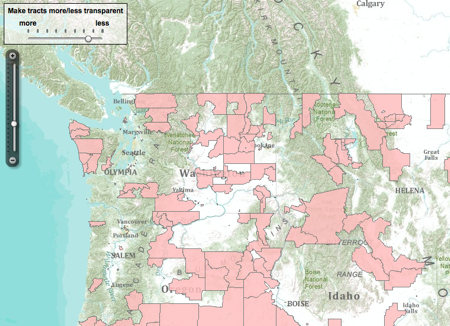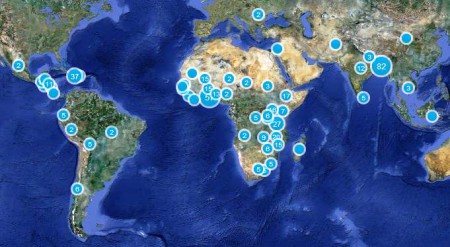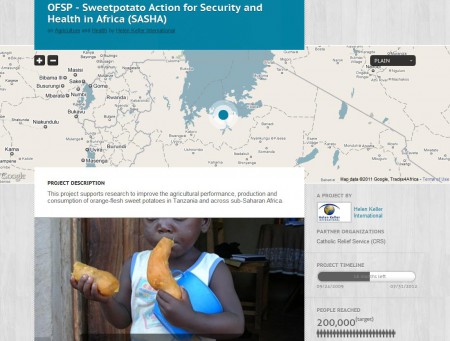- The Australian paradox: A substantial decline in sugars intake over the same timeframe that overweight and obesity have increased. Wait … there’s an Australian paradox too?
- Phytophthora blight of Pigeonpea [Cajanus cajan (L.) Millsp.]: An updating review of biology, pathogenicity and disease management. The wild relatives are sources of resistance, but that won’t be enough.
- Effects of crop mixtures on chocolate spot development on faba bean grown in mediterranean climates. Intercropping with cereals reduces the disease.
- Combining high biodiversity with high yields in tropical agroforests. It can be done, for smallholder cacao in Indonesia.
- And elsewhere … Cost benefit and livelihood impacts of agroforestry in Bangladesh. An entire book.
- Resource concentration dilutes a key pest in indigenous potato agriculture. Monocropping can be sustainable. Via.
- Community versus single-species distribution models for British plants. Overall, better stick with the single species kind, but it was worth a try.
- Quantitative trait loci for salinity tolerance in barley (Hordeum vulgare L.). They exist, and there are markers.
- Climate, competition and connectivity affect future migration and ranges of European trees. Well, doh.
- Quantifying carbon storage for tea plantations in China. All the tea in China…sequesters a lot of C. But plant type doesn’t count for much.
Food desert locator
Luigi and I had the same response to the USDA’s Food Desert Locator: wow!
[A] food desert [is] a low-income census tract where a substantial number or share of residents has low access to a supermarket or large grocery store.
Here’s a little section of the country.

Astonishing in itself, what seems most thrilling is that the entire dataset is downloadable, which suggests all sorts of possible mash-ups: farmers’ markets, poverty, obesity, school journeys, Starbucks locations. The sky’s the limit. Not that correlation is causality, of course.
Nibbles: GBIF, Grains, Sorghum, Carnival, ECP/GR, Rabbits, Conference, Satoyama
- The evolution of the GBIF registry. If you need to ask, you don’t need to know. And if you don’t, you do.
- US farmers encouraged to try millets, sorghum — for birds. …
- … while in Kenya, Farmers turn to sorghum to boost their food security. They’re eating their beer.
- The latest Berry go Round blog carnival is up at Foothills Fancies. I liked the Red Filbert.
- The European Cooperative Programme for Plant Genetic Resources, known to its friends as ecp/gr, has a spiffy new website. But no RSS feed, so it’s unlikely we’ll be bringing you anything else of interest from that site.
- Battery rabbits back on the menu in England? A warren of contradictions, I tell you.
- International Conference on In Situ/On farm conservation and use of agrobiodiversity (fruit crops and wild fruit species) in Central Asia, 23-26 August, in Tashkent. Programme PDF here.
- “Japan should look to satoyama and satoumi for inspiration.” I thought it already had …
Nibbles: Plectranthus, Roads, Fast food, Dog food, Hybrid rice, Mapping climate change, Turf, Cassava, iPhone app, Zizania, Rice
- Livingstone potato (Plectranthus) on the menu in Burundi. Yeah but what does it taste like?
- The world’s roads mapped. About time too.
- The world’s convenience food made better. Maybe.
- Dog cooking pot from ancient China. Woof. Via.
- Hybrid rice backfires. Via.
- Mapping the impacts of climate change. Only country level though.
- Native lawns better. But are they greener?
- JSTOR does a cassava roundup despite hating tapioca.
- Biodiversity monitoring? There’s an app for that.
- Wild rice (not a wild relative of rice, mind, but sacred to the local Native Americans) vs the copper-nickel mining industry.
- Slideshow on rice (the real thing) in Vietnam.
Mapping aid
Thanks to CIAT’s Meike for news that
InterAction has just launched an interactive US Food Security Aid Map that provides detailed project-level information on food security and agriculture work being done by their member NGOs. The site can be browsed by location, sector, organization or project.
Here’s the map of agriculture projects: 1
As coincidence would have it, one of the projects is the orange-fleshed sweet potato work we mentioned in a recent post.
Searching on “agrobiodiversity” yielded nothing, but there were a few hits with “diversification.” Well worth exploring in a bit more detail. If only to identify places where some pre-emptive germplasm collecting might be in order.

